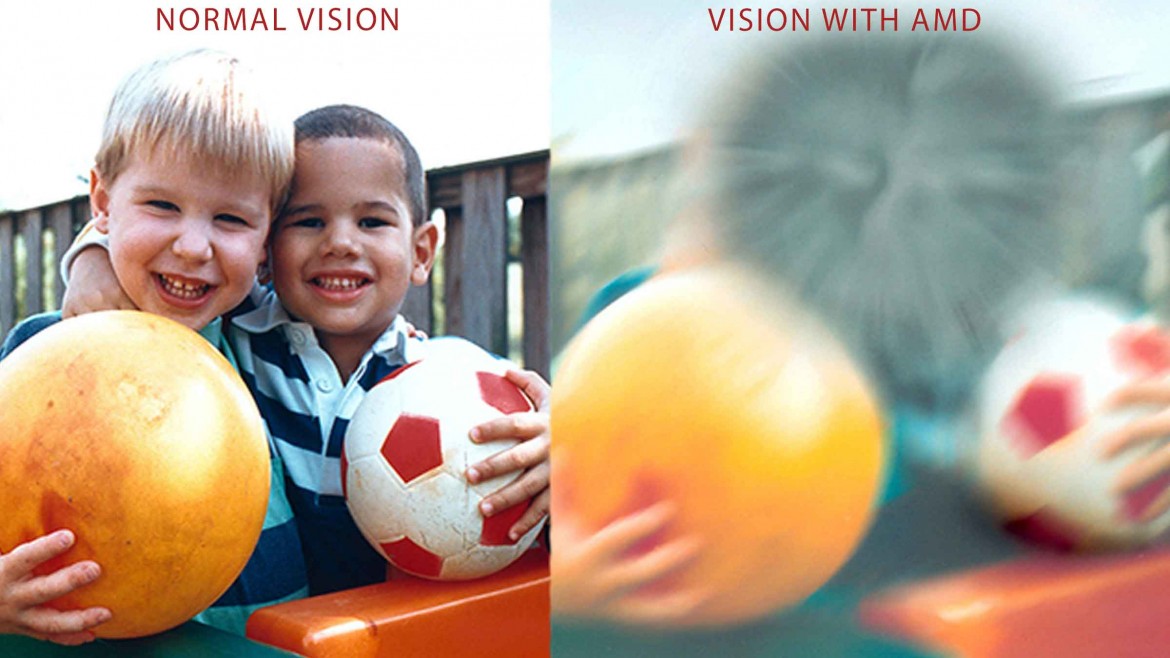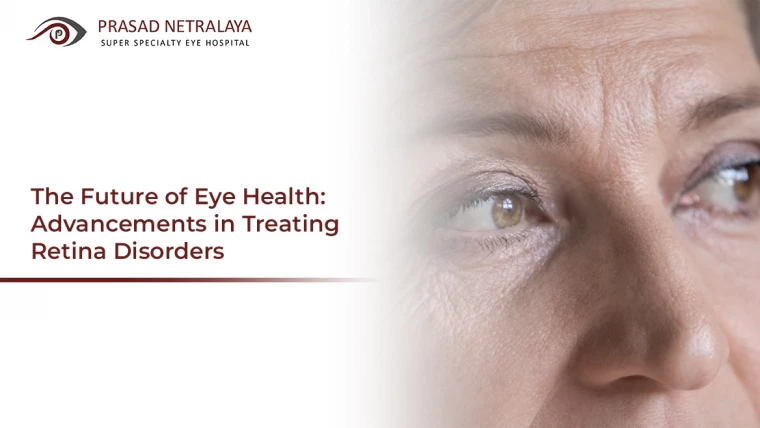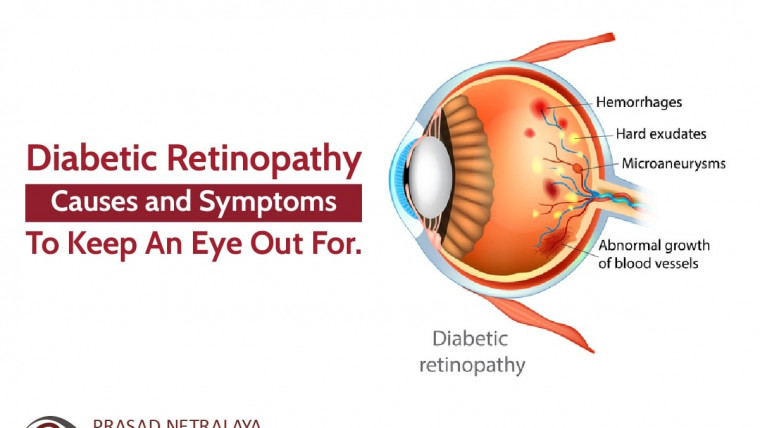What is Age-related Macular Degeneration?
 The macula is a very small and sensitive part of the eye located at the center of the retina, which detects light, sends signals to our brain and interprets them into the images that we see. It is also responsible for our detailed central vision. The surrounding part of the retina is in charge of our peripheral vision. Damage to the macula over a period of time is called Age-related macular degeneration (AMD).
The macula is a very small and sensitive part of the eye located at the center of the retina, which detects light, sends signals to our brain and interprets them into the images that we see. It is also responsible for our detailed central vision. The surrounding part of the retina is in charge of our peripheral vision. Damage to the macula over a period of time is called Age-related macular degeneration (AMD).
AMD can be identified as the yellow spots in the layer of the retina that occurs when our Retinal Pigment Epithelial (RPE) cells start to deteriorate. RPE cells are a pigmented layer of cells that nourish the vision cells or photoreceptors.
This is a progressive disease which can result in minor or complete loss of central vision without affecting our peripheral vision. For example, you notice a black spot while looking at anything and can still see the things surrounding that black spot. AMD typically affects only the macula (the center vision) and not the peripheral vision.
What are the symptoms of AMD that you should be aware of?
Symptoms of AMD are hard to notice in the early stages and could lead to permanent damage. So if you are diabetic, a smoker, have a family history of AMD or if you notice any of the following symptoms, get your eyes checked immediately.

- A blurry or dark spot in the center of your vision.
- Colors or objects seem dull or different in each eye.
- Difficulty in recognizing faces.
- A problem in switching from bright to low light environments and vice versa.
- A requirement of bright light to see things up close.
- Straight lines seem distorted or crooked.
Types of AMD:
Dry AMD:
Dry AMD is the most common form of AMD found in 90% of people who have macular degeneration. It occurs with the natural aging process of the eye when the layer of RPE cells begins to degenerate. Dry AMD is not as severe as wet AMD and can be treated if diagnosed during the early stages. Doing this will give the affected person a better chance of preventing permanent damage.
Wet (neovascular)AMD:
Though found in only 10% of people who have macular degeneration, Wet AMD is still dangerous and a major cause of permanent vision loss. Wet AMD occurs when a lack of oxygen supply to the macula causes new or abnormal blood vessels to grow in the retina. These abnormal blood vessels are extremely fragile and could bleed easily, in turn causing distorted or blurred vision. This condition can rapidly progress into permanent blindness caused by AMD.
What are the precautions and treatment options for AMD?
There is no permanent cure for AMD. However, there are precautionary measures that can be taken. Staying on top of your eye health with the help of an eye doctor is of utmost importance to prevent AMD from progressing further.
Although there are certain factors such as age and family history of AMD that are out of your control, there are certain precautionary actions that you can control; like quitting smoking and maintaining an overall healthy lifestyle. Dietary supplements like Vitamin C, Vitamin E, lutein, zinc, and zeaxanthin, fruits, and green leafy vegetables can lower the risk for Dry AMD by at least 25%. Make sure to get your doctor’s advice before starting any supplements. In the case of Wet AMD, your doctor may suggest treatments like Anti-VEGF (Anti-vascular endothelial growth factor) treatment, Laser treatment or Cool laser therapy.
Most importantly, visit your nearest eye doctor and get all your doubts cleared with a regular eye checkup right away. If you want to consult some of the most trusted eye doctors in Dakshina Kannada, book an appointment at your nearest Prasad Netralaya Super Specialty Eye Hospital. Call 09513576565 / 1800-425-1919 or just fill this form to book your regular eye checkup today!



